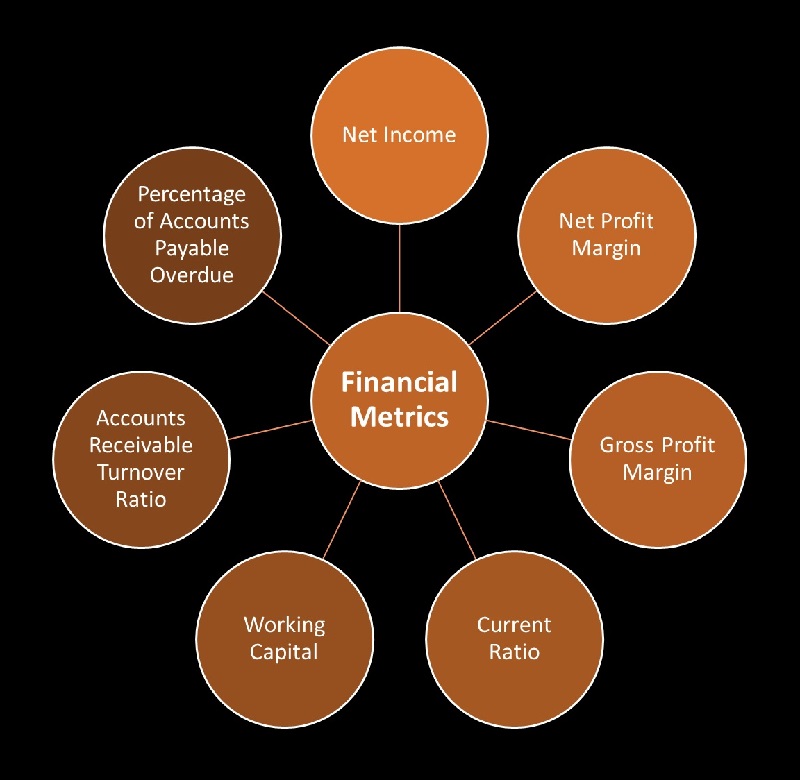
Cash Basis vs. Accrual Explained: The Guide for New Businesses (No More Confusion!)
July 16, 2024
Financial Freedom Starts Here: Budgeting and Cash Flow Management for Small Businesses
July 30, 2024In today’s fast-paced business environment, having up-to-date financial metrics is crucial for maintaining a competitive edge. Real-time financial data not only aids in making informed decisions but also helps in optimizing operational efficiency and driving business growth. This article delves into the numerous benefits of keeping your financial metrics current, providing insights into how this practice can transform your business.
Importance of Financial Metrics
Financial metrics are quantitative measures used to gauge the financial health and performance of a business. They include key indicators such as revenue, expenses, profit margins, cash flow, and return on investment (ROI). These metrics are vital for assessing the company’s financial standing and making strategic decisions.
Enhancing Decision-Making
Having up-to-date financial metrics allows business leaders to make informed decisions swiftly. When data is current, it reflects the most accurate state of the business, enabling managers to respond to market changes and internal challenges effectively.
Improving Financial Planning
Accurate financial metrics are essential for effective financial planning. They help in budgeting, forecasting, and setting financial goals. Real-time data ensures that these plans are based on the most recent information, reducing the risk of errors and assumptions that could lead to financial mismanagement.
Boosting Operational Efficiency
Up-to-date financial metrics help identify inefficiencies in operations. By continuously monitoring expenses and revenues, businesses can pinpoint areas where costs can be cut or where investment might yield higher returns. This ongoing analysis promotes a culture of efficiency and continuous improvement.
Key Financial Metrics to Monitor
Revenue Growth
Revenue growth is a primary indicator of business success. Keeping track of this metric helps businesses understand their market position and the effectiveness of their sales strategies.
Profit Margins
Profit margins, including gross, operating, and net profit margins, provide insight into the company’s profitability. Regular monitoring of these metrics ensures that the business remains profitable and identifies areas for cost reduction.
Cash Flow
Cash flow metrics, such as operating cash flow and free cash flow, are critical for maintaining liquidity. Up-to-date cash flow data helps businesses manage their finances effectively, ensuring they have sufficient funds to meet their obligations.
Return on Investment (ROI)
ROI measures the efficiency of an investment. Monitoring ROI helps businesses determine the profitability of their investments and make informed decisions about where to allocate resources.
Debt-to-Equity Ratio
The debt-to-equity ratio indicates the company’s financial leverage. Keeping this ratio in check ensures that the business maintains a healthy balance between debt and equity, reducing financial risk.

Benefits of Real-Time Financial Data
Enhanced Accuracy
Real-time financial data is less prone to errors compared to data that is updated infrequently. This accuracy is crucial for making reliable business decisions.
Timely Insights
Having access to real-time financial metrics means that businesses can get timely insights into their financial performance. This allows for quick adjustments to strategies and operations, keeping the business agile and responsive.
Better Risk Management
Up-to-date financial metrics enable better risk management by providing early warning signs of potential issues. Businesses can identify trends and patterns that may indicate financial trouble and take proactive measures to mitigate risks.
Increased Transparency
Real-time financial metrics promote transparency within the organization. When financial data is readily available, it fosters a culture of accountability and trust among stakeholders.
Facilitating Growth
Access to current financial metrics supports growth by providing the data needed to make strategic investments. Businesses can identify profitable opportunities and allocate resources efficiently to maximize returns.
Implementing Up-to-Date Financial Metrics
Investing in Financial Software
One of the most effective ways to keep financial metrics up-to-date is by investing in advanced financial software. These tools can automate data collection, analysis, and reporting, ensuring that financial information is always current.
Regular Financial Reviews
Conducting regular financial reviews is essential for maintaining up-to-date metrics. These reviews should be scheduled frequently to ensure that the data reflects the latest business conditions.
Training and Development
Investing in the training and development of financial staff ensures that they are equipped to manage and interpret up-to-date financial metrics effectively. This expertise is crucial for leveraging financial data to drive business success.
Integrating Financial Data
Integrating financial data from various sources can provide a comprehensive view of the business’s financial health. This integration can be achieved through the use of advanced analytics and data management tools.

Challenges in Maintaining Up-to-Date Financial Metrics
Data Overload
One of the challenges of maintaining up-to-date financial metrics is managing the sheer volume of data. Businesses need to have robust data management systems in place to handle and analyze large amounts of financial information efficiently.
Ensuring Data Quality
Ensuring the quality of financial data is critical. Inaccurate or incomplete data can lead to erroneous conclusions and poor decision-making. Implementing stringent data validation processes can help maintain high data quality.
Cost of Implementation
Implementing systems and processes to keep financial metrics up-to-date can be costly. Businesses need to weigh the benefits against the costs and ensure that the investment provides a significant return.
Keeping Up with Changes
The financial landscape is constantly evolving, and businesses need to keep up with changes in regulations, market conditions, and technology. Staying current requires continuous monitoring and adaptation.
Future Trends in Financial Metrics
AI and Machine Learning
Artificial intelligence (AI) and machine learning are revolutionizing financial metrics by providing advanced analytics and predictive insights. These technologies can help businesses make more informed decisions and improve financial performance.
Blockchain Technology
Blockchain technology offers enhanced security and transparency for financial transactions. Integrating blockchain into financial systems can provide real-time, tamper-proof financial metrics.
Advanced Analytics
Advanced analytics tools are becoming increasingly sophisticated, enabling businesses to gain deeper insights from their financial data. These tools can identify trends, patterns, and anomalies that traditional methods might miss.
Cloud-Based Solutions
Cloud-based financial solutions offer scalability, flexibility, and accessibility. These solutions can help businesses maintain up-to-date financial metrics by providing real-time data access from anywhere.
Real-Time Reporting
Real-time reporting tools are becoming more prevalent, allowing businesses to generate up-to-date financial reports quickly and easily. These tools support better decision-making and operational efficiency.
FAQs
Q: What are financial metrics?
- A: Financial metrics are quantitative measures used to evaluate the financial performance and health of a business. They include indicators such as revenue, profit margins, cash flow, and ROI.
Q: Why is it important to keep financial metrics up-to-date?
- A: Keeping financial metrics up-to-date is important for accurate decision-making, financial planning, and risk management. It ensures that business decisions are based on the most current and accurate information.
Q: What tools can help maintain up-to-date financial metrics?
- A: Advanced financial software, cloud-based solutions, and real-time reporting tools can help maintain up-to-date financial metrics. These tools automate data collection and analysis, ensuring accuracy and timeliness.
Q: How often should financial reviews be conducted?
- A: Financial reviews should be conducted regularly, ideally monthly or quarterly, to ensure that financial metrics reflect the latest business conditions and support timely decision-making.
Q: What are the challenges of maintaining up-to-date financial metrics?
- A: Challenges include managing data overload, ensuring data quality, the cost of implementation, and keeping up with changes in the financial landscape.
Q: How can AI and machine learning improve financial metrics?
- A: AI and machine learning can improve financial metrics by providing advanced analytics and predictive insights. These technologies help businesses make more informed decisions and enhance financial performance.
Conclusion
Maintaining up-to-date financial metrics is essential for business success in today’s dynamic environment. Accurate, real-time financial data supports informed decision-making, enhances operational efficiency, and drives growth. By investing in advanced financial tools, conducting regular reviews, and ensuring data quality, businesses can leverage up-to-date financial metrics to achieve their strategic goals and maintain a competitive edge.
Resources
Learn more about key financial ratios
Understand the critical role of cash flow in business
Discover government resources for small business financial health
DISCLAIMER: The information in this article is for informational purposes only and is not meant to take the place of legal and accounting advice.




